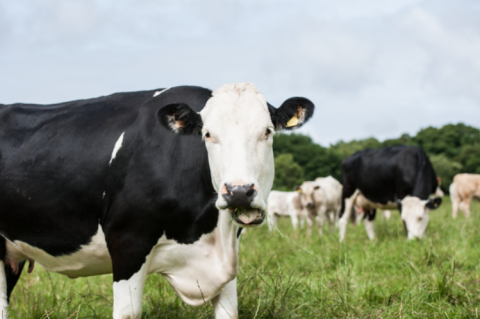A new study comparing traditional (set stocked) cattle grazing with a highly-stocked cell-based approach suggests that grassland can recover just as well from the higher density approach, provided the animals are moved on a regular basis.
The findings could have major implications for livestock management, allowing farmers to use less land to deliver similar quantities of high-quality protein without adversely affecting soil conditions.
The study, undertaken at Rothamsted’s North Wyke farm in Devon, compared soil disturbance in traditionally grazed and cell-grazed fields. In cell grazing animals are penned into smaller areas of the field which are then regularly moved to make more efficient use of the land. In this way more grass is grown and harvested, which in turn promotes the recovery of soil structure in the non-grazed areas. This allows for more cattle to be raised on the same area of pasture by making sure all the grass is grazed more-or-less equally.
By measuring soil compaction in both systems over a season, the researchers found that there was no significant difference in how grazing affects soil structure and how well the pasture recovered over the winter break.
“The results suggest that with careful management of cell grazing including appropriate stocking densities and resting periods, stocking rates on grassland could be increased with no detrimental consequences in soil structure beyond what would normally occur on grazed pasture,” said Dr Alejandro Romero-Ruiz who led the study. “This means we can deliver more high-quality protein using the same land - thus contributing to meet the growing demand for animal-origin foods.”
The data were collected from a permanent pasture of predominantly perennial ryegrass with 5% white clover. The small-scale experiment was setup in enclosed pastures in triplicate with a fixed size of 1.75 ha for open, set-stocked fields and 1.0 ha for cell grazing, the latter of which was sub-divided into 42 cells. For the year of the study, eighteen-month-old dairy beef steers were assigned to either system over 180 grazing days. The open field treatments were grazed with a seasonal stocking rate of 2.3 steers per hectare with the cell grazed treatments at an average seasonal stocking rate of 6 steers per hectare, with a daily allocation of a fresh area across a 21-28 days rotation.
The team tracked the steers’ daily grazing patterns using GPS collars. These were similar in both systems suggesting that the animals’ foraging was not affected by the relatively small size of the enclosures.
In a perfect system, livestock would graze all parts of a field equally. In reality, the animals tend to cluster around features like water troughs leading to uneven grazing and bare patches. Cell grazing reduces these problems. The research team developed a so-called “Moovement model” linking grazing patterns with soil structure and soil functions which may have applications to assess the impacts of grazing in other localities. Future versions of this could include the prediction of areas of dung and urine deposition. These can be linked with variations in vegetation and increased number of microbial communities that may represent hot-spots of increased greenhouse gas emissions from the soil.
“A better understanding of how livestock move and interact with their environment may offer new insights on how grazing practices impact soil and ecosystem functions. This will potentially also offer solutions to reducing the impact of cattle on soil health and the environment,” said Romero-Ruiz.



